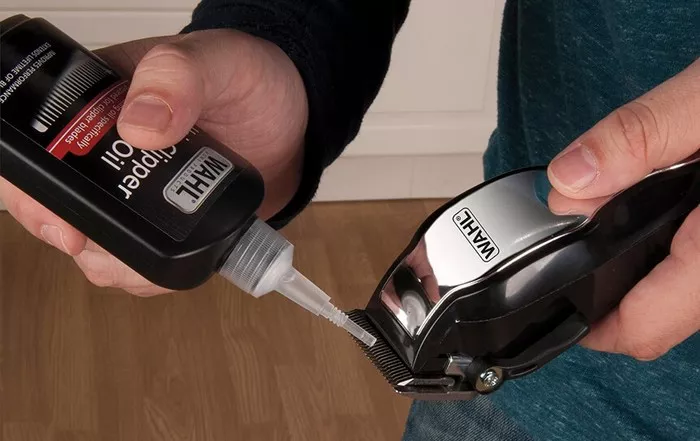Maintaining the hygiene and functionality of your hair clippers is essential for achieving precise cuts and ensuring the longevity of the tool. Proper cleaning and maintenance not only prevent hair and skin infections but also keep the clipper blades sharp and efficient. This comprehensive guide will walk you through the steps to clean your hair clippers using water, ensuring they remain in top condition.
Understanding the Importance of Cleaning Hair Clippers
Regularly cleaning your hair clippers is crucial for several reasons:
1. Hygiene: Hair clippers come into direct contact with hair and skin, making them susceptible to accumulating bacteria, fungi, and other pathogens. Proper cleaning reduces the risk of infections and skin irritations.
2. Performance: Dirt, hair, and product build-up can dull the blades and clog the motor, leading to poor performance. Clean clippers operate more smoothly and provide better cuts.
3. Durability: Regular maintenance extends the life of your clippers. Clean and lubricated blades are less likely to rust or wear out prematurely.
Tools and Materials Needed
Before you begin, gather the following tools and materials:
- Small brush (often included with the clippers)
- Screwdriver (if needed for disassembly)
- Warm water
- Mild dish soap
- Soft cloth or towel
- Blade oil or lubricant
- Small container or bowl
Step-by-Step Guide to Cleaning Hair Clippers in Water
1. Preparation
Unplug the Clippers: Ensure the clippers are unplugged from the power source to prevent any electrical hazards.
Remove Accessories: Detach any comb attachments or guards. These can be cleaned separately.
2. Initial Cleaning
Brush Off Loose Hair: Use the small brush to remove loose hair and debris from the blades and body of the clippers. This step makes the washing process more effective.
Disassemble (if necessary): If your clippers’ blades are detachable, remove them for a more thorough cleaning. Follow the manufacturer’s instructions for disassembly.
3. Washing the Blades
Prepare Cleaning Solution: Fill a small container or bowl with warm water and add a few drops of mild dish soap. Mix until sudsy.
Clean the Blades: Submerge the blades in the soapy water and use the brush to gently scrub away any remaining hair and dirt. Be careful not to damage the blades.
Rinse Thoroughly: Rinse the blades under warm running water to remove all soap residue. Make sure no water enters the internal parts of the clippers.
4. Cleaning the Clipper Body
Wipe Down the Body: Use a damp cloth with a bit of mild soap to wipe down the exterior of the clippers. Avoid getting water into the motor or electrical components.
Dry the Body: Dry the clipper body thoroughly with a towel. Ensure no moisture remains to prevent rust or electrical issues.
5. Drying the Blades
Pat Dry: Use a soft towel to pat the blades dry. Be gentle to avoid dulling the edges.
Air Dry: Allow the blades to air dry completely before reassembling. This ensures no moisture is trapped, which could cause rust.
See Also: How to Use Rose Water on Scalp: A Comprehensive Guide
6. Lubricating the Blades
Apply Blade Oil: Once the blades are dry, apply a few drops of blade oil or lubricant. This reduces friction and prevents rust.
Distribute the Oil: Turn on the clippers briefly to distribute the oil evenly across the blades. Wipe off any excess oil.
7. Reassembly and Final Check
Reassemble the Clippers: If you disassembled the clippers, reattach the blades according to the manufacturer’s instructions.
Test the Clippers: Plug in the clippers and turn them on to ensure they are working smoothly. Check for any unusual noises or issues.
Additional Tips for Maintaining Hair Clippers
Regular Cleaning: Clean your clippers after every use to maintain hygiene and performance.
Proper Storage: Store your clippers in a dry place to prevent moisture build-up and rust.
Use the Right Products: Only use products recommended by the manufacturer, including blade oil and cleaning solutions.
Check the Blades: Inspect the blades regularly for signs of wear or damage. Replace them if necessary to maintain cutting efficiency.
Common Mistakes to Avoid
Using Excessive Water: Avoid submerging the entire clipper in water. Only the blades should be cleaned with water.
Skipping Lubrication: Failing to lubricate the blades after cleaning can cause them to rust and wear out quickly.
Neglecting the Motor: Ensure the motor area remains dry and free of debris to avoid mechanical issues.
Ignoring Manufacturer’s Instructions: Always follow the cleaning and maintenance guidelines provided by the clipper manufacturer.
Troubleshooting Common Issues
Clipper Not Turning On: Ensure the clippers are properly plugged in and check for any loose connections. If the problem persists, consult the manufacturer or a professional technician.
Blades Pulling Hair: This may indicate dull blades or lack of lubrication. Clean and oil the blades, and consider replacing them if they are worn out.
Unusual Noises: Unusual noises could be a sign of internal damage or debris. Clean the clippers thoroughly and check for any loose parts.
Conclusion
Properly cleaning your hair clippers using water is a straightforward process that significantly enhances their performance and longevity. By following the steps outlined in this guide, you can ensure your clippers remain hygienic, efficient, and durable. Regular maintenance not only protects your investment but also ensures you achieve the best possible results with every use. Remember, clean clippers are happy clippers, and happy clippers make for happy haircuts!


